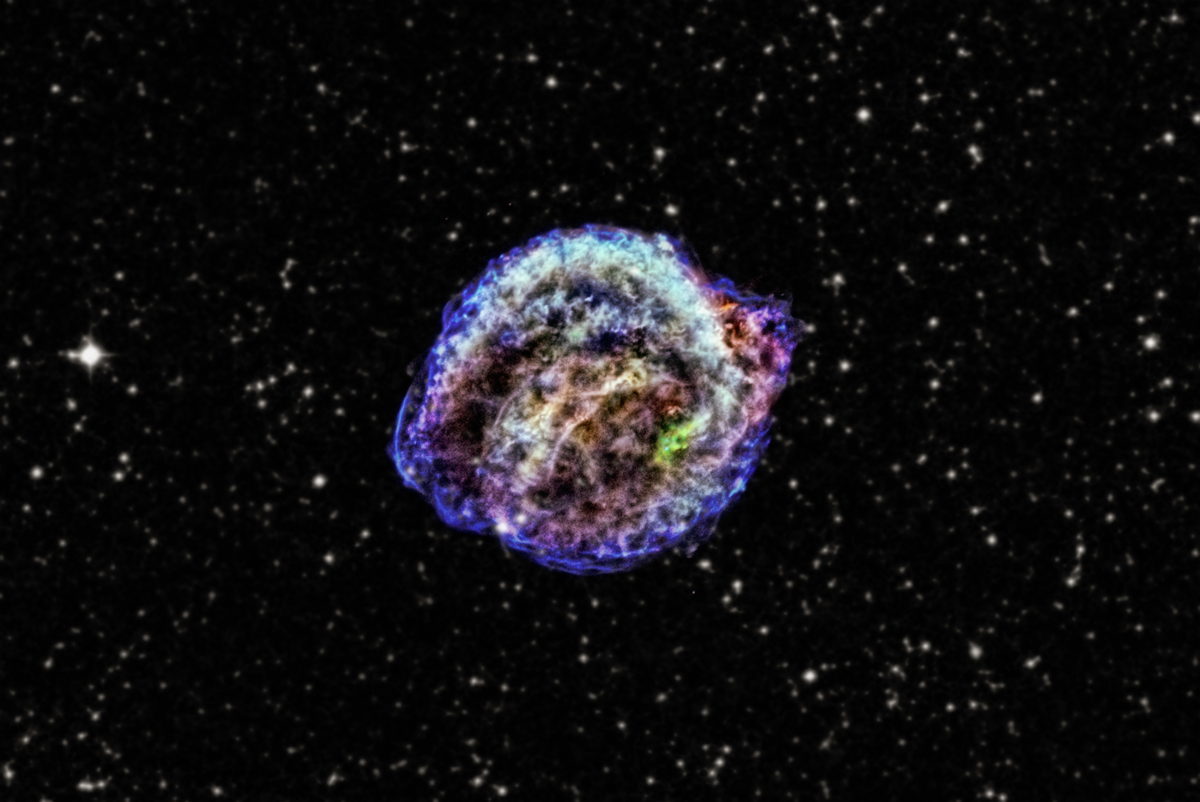Radioactive 'snowflakes' act like the tiniest nuclear bombs in the universe

Tiny snowflakes of radioactive uranium that trigger massive nuclear blasts might explain some of the universe's more mysterious star explosions.
As smallish stars die, they cool into husks of their former selves known as white dwarfs. New research proposes that atoms of uranium sink to the centers of these aging white dwarf stars as they cool, freezing into snowflake-like crystals no bigger than grains of sand. There, these "snowflakes" can act as some of the tiniest nuclear bombs in the universe, becoming the "spark that sets off the powder keg," said study co-author Matt Caplan, a theoretical physicist at Illinois State University.
"It's important to understand how these explosions occur for all sorts of applications, from the production of elements to the expansion of the universe," Caplan told Live Science.
Related: Big Bang to the present: Snapshots of our universe through time
These unusually dim star explosions are part of a class known as Type Ia supernovas. Typically, scientists think these explosions occur when a white dwarf star reaches a critical mass after siphoning gas from a companion star the white dwarf is in orbit with. Because Type Ia supernovas explode when they reach the same mass, they have the same brightness. This uniform brightness allows them to be used as a standard by which t distances in the universe are measured.
However, astronomers have noticed some Type Ia supernovas that are slightly dimmer than they should be. The new research, accepted to the journal Physical Review Letters, proposes an explanation in which lower-mass white dwarfs without a binary star companion can explode as supernovas on their own —even without sipping mass from a nearby star.
"Maybe we don't need the companion," study co-author Chuck Horowitz, a theoretical nuclear astrophysicist at Indiana University, told Live Science. "Maybe a single star on its own can explode."
Get the Space.com Newsletter
Breaking space news, the latest updates on rocket launches, skywatching events and more!
The birth of a stellar atomic bomb
White dwarfs are the remnant cores of stars less than 10 times the mass of the sun. Having shed their outer layers, white dwarfs are cold, unburning balls of mostly carbon and oxygen with a few other elements, such as uranium, sprinkled in. As they slowly cool over hundreds of thousands of years, their atoms freeze, with the heaviest atoms — like uranium — sinking to the core and solidifying first.
Traditionally, scientists thought these white dwarfs, when solo, eventually dwindled into cold, dark husks. But in some cases, this process could set the stage for a massive nuclear-bomb-like explosion, the scientists said. When sunken uranium atoms bump into one another, they freeze, forming tiny radioactive snowflakes. Within an hour of the snowflake's formation, a rogue passing neutron in the core could smash into the snowflake, triggering fission — the nuclear reaction in which an atom is split. This fission could set off a chain reaction, similar to that in a nuclear bomb, eventually igniting the rest of the star and causing the white dwarf to explode as a supernova all by itself.
Related: The 12 strangest objects in the universe
For this chain reaction to happen, however, there needs to be plenty of the radioactive isotope uranium-235. Because this isotope decays naturally over time, this type of explosion is only possible in the biggest stars, which have the shortest life spans. Smaller stars, such as the sun, some 5 billion years in the future when it dies, wouldn't have enough uranium-235 left for such explosions by the time they became white dwarfs.
The new paper has been met with interested skepticism by some scientists.
"If it works, it would be a really interesting way to do it," Ryan Foley, an astronomer at the University of California, Santa Cruz, told Live Science. However, Foley noted that dim Type Ia supernovas tend to come from old populations of stars, not those with mostly younger stars, where this type of explosion would occur. "Among young stars, there are very few,if any, dim Type Ia supernovae," Foley said.
While the research has shown that this new mechanism is physically possible, it's not clear yet if these solo star explosions really happen, how often they happen and exactly how the fission that fuels them is triggered.
"Right now, we're eager to run simulations to see if the snowflakes can really ignite the fission chain reaction to explode the star," Caplan told Live Science. "Even if it didn't fully ignite, it would be interesting to see if there is a fizzle or weak burning in the core."
Originally published on Live Science.
Join our Space Forums to keep talking space on the latest missions, night sky and more! And if you have a news tip, correction or comment, let us know at: community@space.com.

Mara Johnson-Groh is a contributing writer for Live Science. She writes about everything under the sun, and even things beyond it, for a variety of publications including Discover, Science News, Scientific American, Eos and more, and is also a science writer for NASA. Mara has a bachelor's degree in physics and Scandinavian studies from Gustavus Adolphus College in Minnesota and a master's degree in astronomy from the University of Victoria in Canada.











